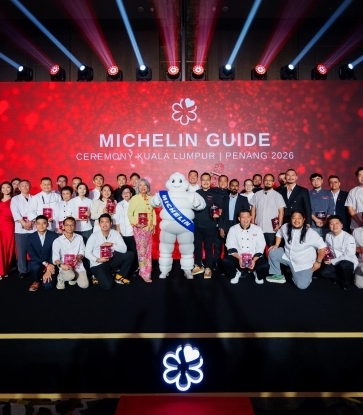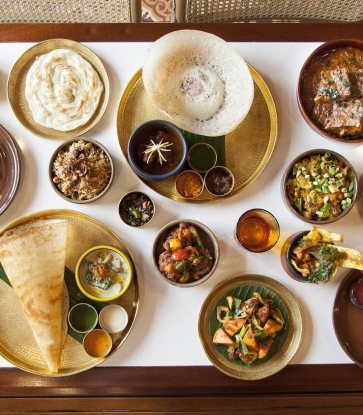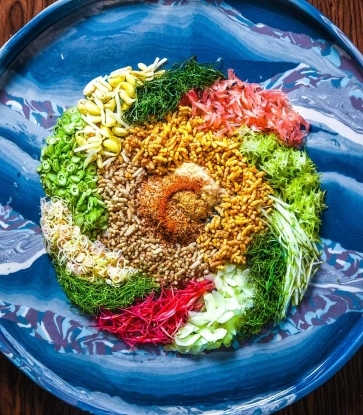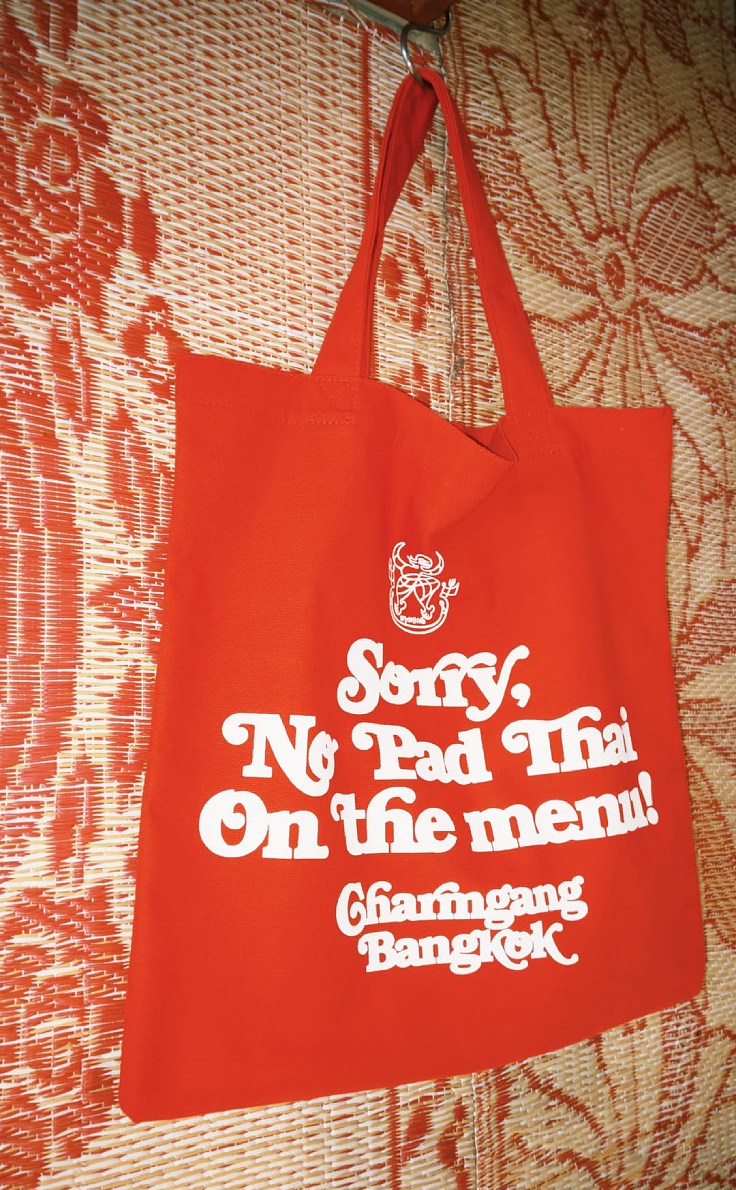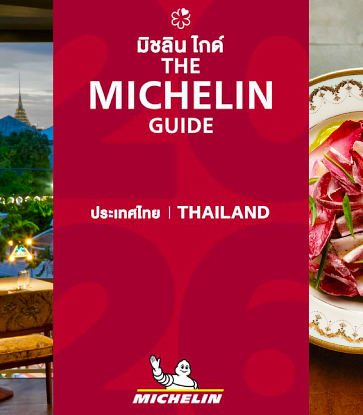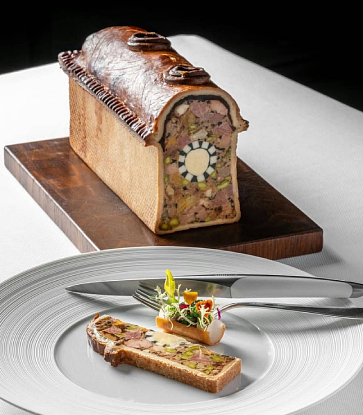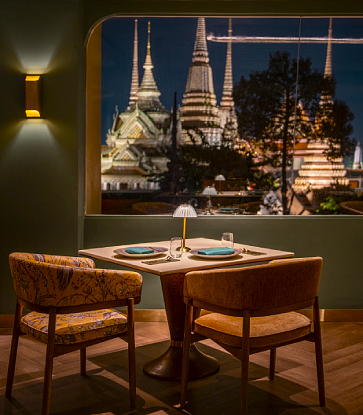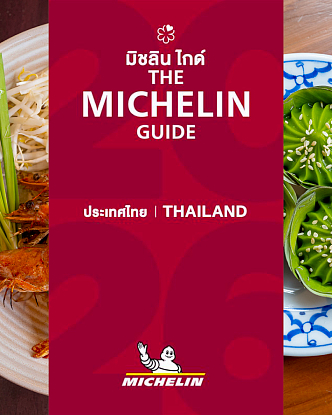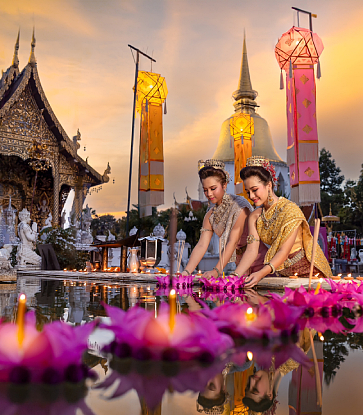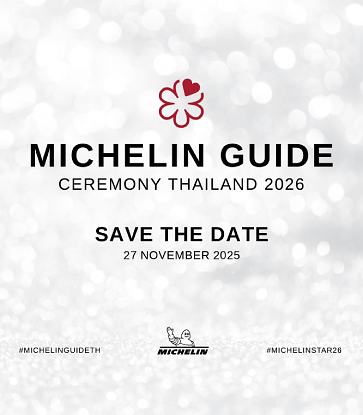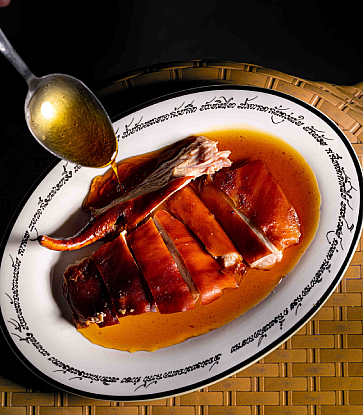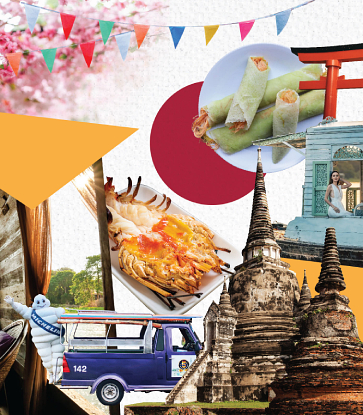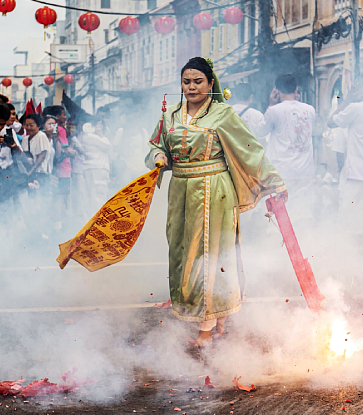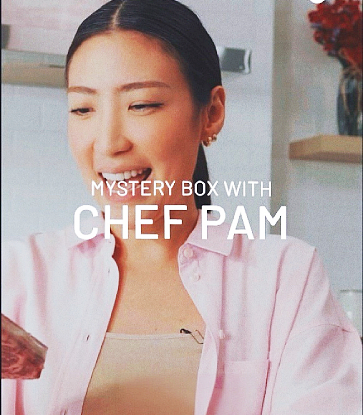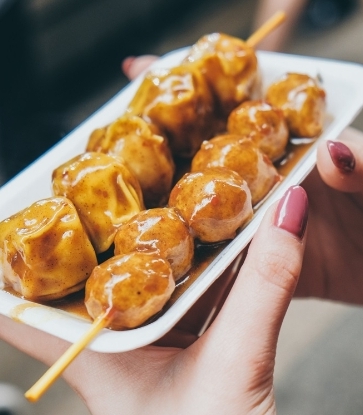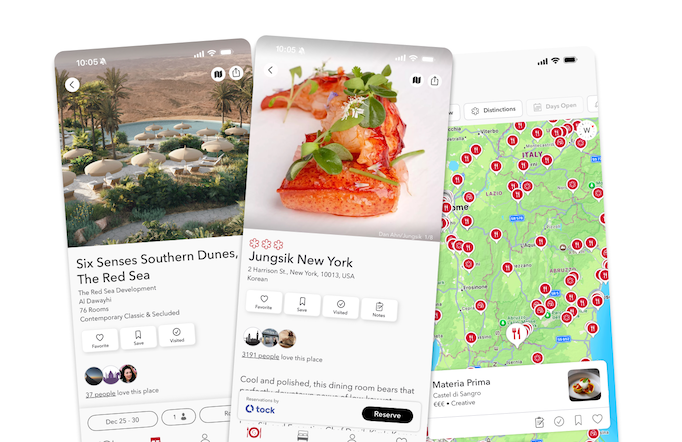Every country has its own summer festivals and cuisine, and globally famous Thailand is no exception. Travellers from around the world dream of experiencing the fun and unique culture of Songkran in this tropical country. But first—can you guess the must-have dish that keeps you cool during the summer? It’s… khao chae.

What is khao chae? And why Songkran?
Khao chae is a traditional dish adapted from the Mon people’s poeng dajk or poeng sangkran, which translates to “soaked rice.” This delicacy was originally reserved for special occasions such as the traditional New Year or religious ceremonies. In Thailand, khao chae has been modified to reflect uniquely Thai characteristics. This seasonal dish is enjoyed for its refreshing quality, helping you stay cool during the scorching heat of summer.The name khao chae comes from a combination of two words: khao, meaning rice, and chae, meaning soaked. This specialty dish features rice soaked in jasmine-scented water, served alongside a variety of side dishes such as luk kapi (krill or shrimp paste balls), chai po pad wan (stir-fried preserved radish), pla wan (sweet fried fish), stuffed shallots, and stuffed sweet peppers.
Fresh vegetables like cucumber, fingerroot, and raw mango are also served to balance the flavours. Each component requires careful preparation. The rice must be made from aged grains, and the jasmine-scented water must be further infused with the fragrance of a traditional Thai scented candle. Several of the side dishes take days to prepare, and presentation is equally meticulous.
All of this makes khao chae a unique and refined culinary tradition—widely regarded as the “queen” of Thai summer cuisine.
As Songkran marks one of the most auspicious occasions of the traditional New Year, the exquisite khao chae serves as both a celebration and a reflection of familial love. It’s a time when families gather to reconnect and enjoy each other’s company. Khao chae has become a cherished tradition and a delicious way to beat the summer heat. This delicacy is typically available only during the season.
Of course, there are variations of khao chae. The Phetchaburi-style version comes with just three side dishes, while the noble Bunnag family’s rendition includes four different types of flowers floated in the scented water, along with their own unique recipes for the accompaniments. Discovering these different takes on khao chae is one of the many delightful memories you can create during Songkran.

The 5 senses of khao chae
Sight: Khao chae is a visual feast. Its presentation is meticulously crafted—from the elegant serveware and thoughtful arrangement of each element to the intricate carving of fruits and vegetables. It truly lives up to the saying, “You eat with your eyes before your mouth.”Smell: One of the defining elements of khao chae is the jasmine-scented water, delicately infused with candle smoke. This transforms the meal into a gentle aromatherapy experience that soothes and refreshes.
Taste: The side dishes offer a delightful contrast of flavours. To fully enjoy khao chae, take your time—savour one side dish and let its flavour bloom before softening the palate with a spoonful of the subtly scented rice.
Sound: The cheerful hum of conversation captures one of Songkran’s true joys—bringing families together. Lively chats around the table add to the charm of khao chae, making each bite more memorable when shared with loved ones.
Touch: It’s customary to wash your hands before the meal begins. As you use your fingers to pick up the side dishes and fresh vegetables, you experience a variety of textures—from soft and delicate to crisp and crunchy—adding a tactile layer to the khao chae experience.
How best to enjoy khao chae
There’s an art to enjoying khao chae properly—one that balances bold flavours with subtle fragrance. Begin with the side dishes. Their intensity is designed to awaken the palate. Once savoured, follow with a spoonful of the delicately scented rice soaked in floral water. This sequence preserves the soft, clean aroma of the jasmine-infused water and allows the rice to remain light and refreshing.One golden rule: never place the side dishes into the rice or the scented water. Doing so releases oils and strong flavours that can overwhelm the subtle perfume of the dish—diminishing what makes khao chae so special.
Between bites, enjoy a piece of fresh vegetable or fruit to cleanse your palate. This gentle rhythm of savour, refresh, and repeat is how khao chae is best experienced—elegantly, thoughtfully, and always with a sense of seasonal celebration.

Where to find khao chae
As mentioned earlier, khao chae comes in many regional variations and is traditionally served only during the hot season—except in Phetchaburi, where khao chae mueang Phet has become a local staple, available all year round. Just mention khao chae, and food lovers will likely think of this signature version from Phetchaburi.Come summer, however, the dish takes centre stage across Thailand. It’s not just a seasonal treat—it’s a cultural celebration. Songkran marks a time when Thai restaurants across the country unveil their own interpretations, often turning the dish into a culinary showcase.
Naturally, some of the most exciting renditions come from restaurants featured in the MICHELIN Guide Thailand 2025, where chefs elevate the experience with creativity, elegance, and tradition. Below, we highlight a few standout places serving khao chae that just might make you forget the sweltering heat.
Phra Nakhon
Recommended, MICHELIN Guide Thailand 2025 Set within Capella Bangkok—recipient of two MICHELIN Keys in 2024—Phra Nakhon presents a refined take on khao chae, crafted under the guidance of Chef Kannika Jitsangworn.
“The secret lies in the jasmine rice,” Chef Jitsangworn shares. “We carefully steam and polish Thai jasmine rice until the grains are flawless, then soak them in floral-scented water infused with jasmine, ylang-ylang, bread flower, and damask rose. This delicate process creates a distinct fragrance and flavour that sets our khao chae apart.”
The side dishes are equally thoughtful. Luk kapi (shrimp paste balls) are made from locally sourced ingredients. Bell peppers are stuffed and delicately wrapped in an egg net, while the shallots are filled with seasoned snakehead fish. The final touch? A stunning presentation of carved vegetables that transforms each plate into a work of art.
The chef also shares her personal tasting tips: pair luk kapi with fingerroot, follow the stuffed shallot with a slice of mango, and enjoy the stuffed bell pepper alongside onion before taking a spoonful of the scented rice.
Address: Lower Lobby, Capella Bangkok, 300/2 Charoenkrung Road, Yan Nawa, Sathon, Bangkok.

Kaen
Recommended, MICHELIN Guide Thailand 2025At Kaen, Chef Paisarn Cheewinsiriwat brings a contemporary Thai fine dining sensibility to the table—rooted in the ingredients and culinary spirit of Isan, particularly his hometown of Khon Kaen.
“We bring an Isan soul to the traditional khao chae,” he explains. “It’s ironic—sticky rice is the staple in the Northeast, yet some of the best jasmine rice in Thailand is grown in Thung Kula Ronghai.” That very aged jasmine rice forms the foundation of Kaen’s version of khao chae.
The side dishes reflect bold Northeastern flavours: luk kapi (shrimp paste balls), sweetened spotted eagle ray, sweet preserved radish, stuffed shallot, and bell pepper filled with fermented fish from Kaeng Lawa wetlands. There’s also caramelised pork rind for added crunch, and a vibrant seasonal fruit salad to refresh the palate.
To finish, diners are served som choon, a delicate Thai dessert made with sweet and tangy fruits—“a perfect refresher for the hottest days,” says Chef Cheewinsiriwat.
Address: 140/64 Soi Adunyaram 7, Nai Mueang, Mueang Khon Kaen, Khon Kaen.

Chim by Siam Wisdom
One MICHELIN Star, MICHELIN Guide Thailand 2025For Chef Thanintorn “Noom” Chantrawan, khao chae is more than just a seasonal dish—it’s a culinary heirloom. “We don’t see khao chae as simply a Songkran special,” he says. “It’s a precious part of Thai gastronomic heritage.”
At Chim by Siam Wisdom, preserving that legacy means meticulous craftsmanship. Jasmine rice is carefully prepared and soaked in flower-scented water, delicately smoked with a traditional Thai candle. The dish is served cold to retain its refined aroma and silky texture.
Each element on the plate is made by hand with unwavering attention to detail. The balance of spicy, sweet, and umami is carefully composed—luk kapi (shrimp paste balls), sweet preserved radish, stuffed shallots, and bell peppers are all prepared with precision and artistry. “Every bite,” Chef Chantrawan explains, “should convey the elegance and complexity that make khao chae a national treasure.”
Location: 315 Soi Ongkharak 13, Thanon Nakhon Chai Si, Dusit, Bangkok.

Planning a trip to Thailand this Songkran?
Don’t miss the chance to savour khao chae at one of the MICHELIN-recommended Thai restaurants, many of which offer their own versions of this seasonal favourite each year. Explore the full list here.And for the perfect stay, book a hotel selected by the MICHELIN Guide. See the complete list of awarded accommodations here.
Need more travel tips before you go? Contact the TAT Call Centre at 1672 or visit the TAT Contact Centre on Facebook for the latest updates.
Illustration image: © Shutterstock




